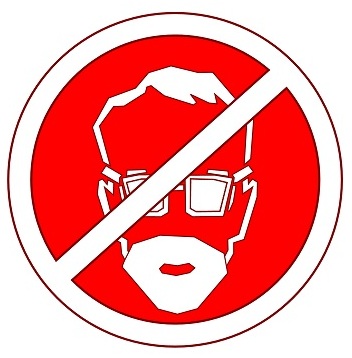 Project Glass not likely to offer augmented reality at launch
Project Glass not likely to offer augmented reality at launch
Google’s Project Glass has been receiving limited attention in recent months, largely due to the fact that Google has pumped the brakes on its promotional campaigns concerning the augmented reality glasses. Project Glass remains in a state of early development, but several prototype models have been seen in the real world, outside of Google’s laboratory. There have been rumors circulating that Project Glass will not actually include augmented reality technology, a feature that drew in the majority of attention concerning the high-tech eyewear. These rumors may actually be true.
Head engineer notes that augmented reality is not an immediate goal
Project Glass head engineer Babak Parviz has announced that augmented reality is not an immediate goal for the project. This may come as a shock for consumers that have been looking forward to the high-tech eyewear because Google has been very adamant about the inclusion of augmented reality technology in Project Glass. When the glasses were first unveiled in early 2012, augmented reality was billed as one of the project’s primary features.
Google faces criticism for hyping augmented reality
For several months after the unveiling of Project Glass, Google has been pushing the idea that augmented reality would be one of the cornerstone features of the glasses. According to Parviz, however, augmented reality has been difficult to incorporate into the project. As such, augmented reality may be completely absent from the commercial launch of Project Glass. Instead, the eyewear will come with an application programming interface that will allow developers to create their own applications.
Developers able to create their own applications for Project Glass
The application programming interface will be able to support augmented reality applications and Project Glass itself will certainly be equipped with the hardware necessary for these applications to run smoothly. Future incarnations of Project Glass may include augmented reality of its own, but the technology is not likely to be seen in the first commercial products that are released from Google.
 Looking into the future of AR technology shows possibilities in the automotive sector.
Looking into the future of AR technology shows possibilities in the automotive sector.
Though augmented reality has been making its mark in many different areas, such as in glasses, video games, publishing, and advertising, the automotive sector has been drawing a great deal of attention in terms of this cutting edge technology as it has been suggested as a convenience and safety tool.
The way that it would be applied in this industry would be to work the technology into windshields.
People have been speculating for some time now about the benefits of augmented reality windshields in vehicles. In 2004, BMW recognized the benefit of placing driving related information right in the line of sight of the driver by introducing the first color Head-Up Display (HUD). That same automotive manufacturer started work in 2011 on HUD acquiring a functionality that is “Contact Analogue”, which would allow a virtual marking to be superimposed over various real world objects in the view of the driver. This opens up the potential for displaying safety and navigation information right on the “screen” of the windshield.
It is precisely this type of feature that could be provided through a windshield with augmented reality.
An augmented reality windshield provides warnings of potential hazards, driving directions, and other relevant information in a way that the driver would never have to take his or her eyes off the road in order to see it.
The automotive industry has been embracing high tech solutions for years and as the release of the driver-free car draws ever nearer, the technological innovations become increasingly dazzling. A feature such as an augmented reality windshield would fit right in with other offerings that are already available, such as active park assist, attention assist (a drowsiness detector for drivers), active cruise control radar, collision warning with full auto brake, active city safety, and pedestrian detection, not to mention blind spot obstacle detection and Bluetooth.
These systems, and potential augmented reality features that can offer tremendous increases in the efficiency, safety, comfort, and convenience of the driving experience and traveling by car regardless of whether it’s in the city in a familiar area, or traveling across the country on unknown adventures.
 Project Glass not likely to offer augmented reality at launch
Project Glass not likely to offer augmented reality at launch
 Looking into the future of AR technology shows possibilities in the automotive sector.
Looking into the future of AR technology shows possibilities in the automotive sector.